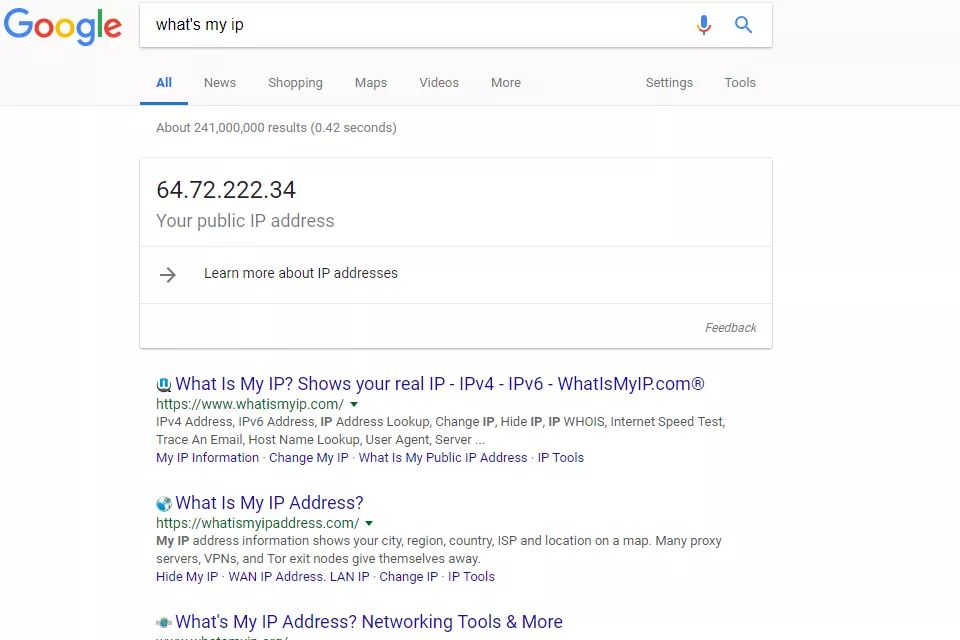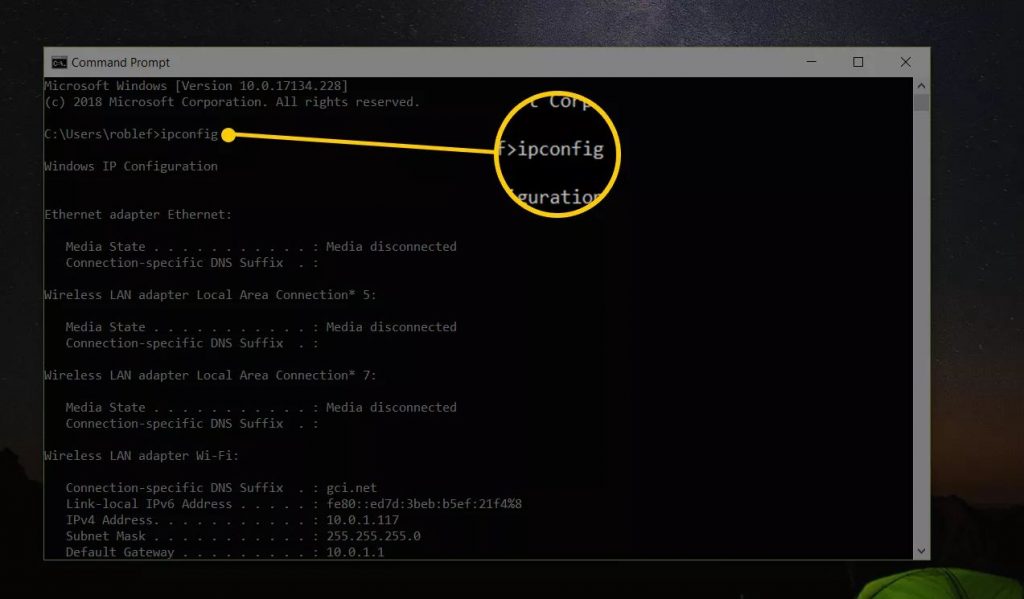An IP address, short for Internet Protocol address, is an identifying number for network hardware connected to a network. Having an IP-address allows a device to communicate with other devices over an IP-based network like the internet.
Most IP addresses look like this:
151.101.65.121
Other IP addresses you might come across could look more like this:
2001:4860:4860::8844
There’s a lot more on what those differences mean in the IP Versions (IPv4 vs IPv6) section below.
What Is an IP Address Used For?
An IP address provides an identity to a networked device on the internet. Similar to a home or business address supplying a specific physical location with an identifiable address, devices on a network are differentiated from one another through IP addresses.
If you’re going to send a package to your friend in another country, you have to know the exact destination. This same general process is used when sending data over the internet. However, instead of using a physical mailing address, your computer uses DNS servers to look up a hostname to find its IP address.
For example, when you enter a website URL like www.myip.world into your browser, your request to load that page is sent to DNS servers that look up the hostname of “myip.world.com” to find its corresponding IP address. Without the IP address, your computer would have no clue what it is that I’m after.
Different Types of IP Addresses
Even if you’ve heard of IP addresses before, you might not realize that there are specific types of IP addresses. While all IP addresses are made up of numbers or letters, not all addresses are used for the same purpose.
There are private IP addresses, public IP addresses, static IP addresses, and dynamic IP addresses. That’s quite a variety!
To add to the complexity, each type of IP address can be an IPv4 address or an IPv6 address — again, more on these at the bottom of this page.
- Private IP Address: These are used “inside” a network, like the one you probably run at home, used by things like tablets, Wi-Fi cameras, wireless printers, desktops, etc. These types of IP addresses are used to provide a way for your devices to communicate with your router and all the other devices on your private network. Private IP addresses can be set manually or assigned automatically by your router.
- Public IP Address: These are used on the outside of your network and are assigned by your ISP. It’s the main address that your home or business network uses to communicate with the rest of the networked devices around the world (i.e., the internet). It provides a way for the devices in your home, for example, to reach your ISP, and therefore the outside world, allowing them to do things like access websites and communicate directly with other computers and servers around the world.
Both private IP addresses and public IP addresses are either dynamic or static, which means that, respectively, they either change or they don’t.
An IP address that is assigned by a DHCP server is a dynamic IP address. If a device doesn’t have DHCP enabled or doesn’t support DHCP, then the IP address must be assigned manually, in which case it’s called a static IP address.
What Is My IP Address?
Different devices and operating systems require unique steps to find the IP address. There are also different steps to take if you’re looking for the public IP address provided to you by your ISP, or if you need to see the private IP address that your router assigned to your device.How to Find Your IP Address
PUBLIC IP ADDRESS

There are lots of ways to find your router’s public IP address, but this site will make it super easy. Our site work on any network-connected device that supports a web browser, like your smartphone, iPod, laptop, desktop, tablet, etc.
Another good way to find your external IP address in Windows is using the following command in the Command Prompt:
PRIVATE IP ADDRESS

In Windows, you can find your device’s local IP address via the Command Prompt, using the ipconfig command.
See how do I find my default gateway IP address? if you need to find the IP address of your router, or whatever device that your network uses to access the public internet.
- Linux: Linux users can launch a terminal window and enter the command hostname -I (that’s a capital “i”), ifconfig, or ip addr show.
- MacOS: For macOS, use the command ifconfig to find your local IP address.
- iOS: iPhone, iPad, and iPod touch devices show their private IP address through the Settings app in the Wi-Fi menu. To see it, just tap the small “i” button next to the network it’s connected to.
- Android: You can see the local IP address of an Android device through Settings > Network & internet > Wi-Fi, or depending on your Android version, Settings > Wi-Fi or Settings > Wireless Controls > Wi-Fi settings. Just tap the network you’re on to see a new window that shows network information that includes the private IP address. You might have to expand an Advanced area of the network’s details page to see the private IP address.
IP Versions (IPv4 vs IPv6)
There are two versions of IP: internet protocol version 4 (IPv4) and Internet protocol version 6 (IPv6). If you’ve heard of these terms, you probably know that the former is the older version, while IPv6 is the upgraded IP version.What Is IPv4 and IPv6?
One reason IPv6 is replacing IPv4 is that it can provide a much larger number of IP addresses than IPv4 allows. With all the devices you may have constantly connected to the internet, it’s important that there’s a unique address available for each one of them.
- IPv4: The way IPv4 addresses are constructed means it’s able to provide over 4 billion unique IP addresses (232). While this is a very large number of addresses, it’s not enough for the modern world with all the different devices people are using on the internet.
- IPv6: IPv6 supports a whopping 340 trillion, trillion, trillion addresses (2128). That’s 340 with 12 zeros! This means every person on earth could connect billions of devices to the internet. True, this is a bit of an overkill, but you can see how effectively IPv6 solves this problem.
Visualizing this helps understand just how many more IP addresses the IPv6 addressing scheme allows over IPv4. Pretend a postage stamp could provide enough space to hold each and every IPv4 address. IPv6, then, to scale, would need the entire solar system to contain all of its addresses.

In addition to the greater supply of IP addresses over IPv4, IPv6 has the following added benefits:
- No more IP address collisions caused by private addresses.
- Auto-configuration
- No reason for Network Address Translation (NAT)
- More efficient routing
- Easier administration
- Built-in privacy, and more.
IPv4 displays addresses as a 32-bit numerical number written in decimal format, like 207.241.148.80 or 192.168.1.1.
Because there are trillions of possible IPv6 addresses, they must be written in hexadecimal to display them, like 3ffe:1900:4545:3:200:f8ff:fe21:67cf.
This article is inspired from here.
